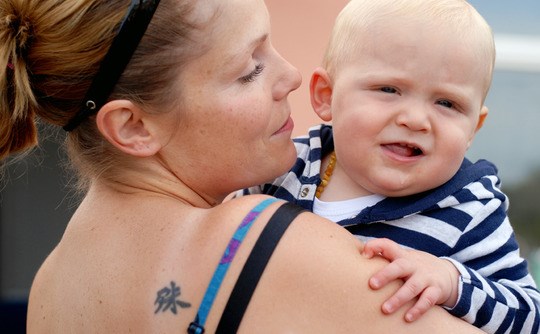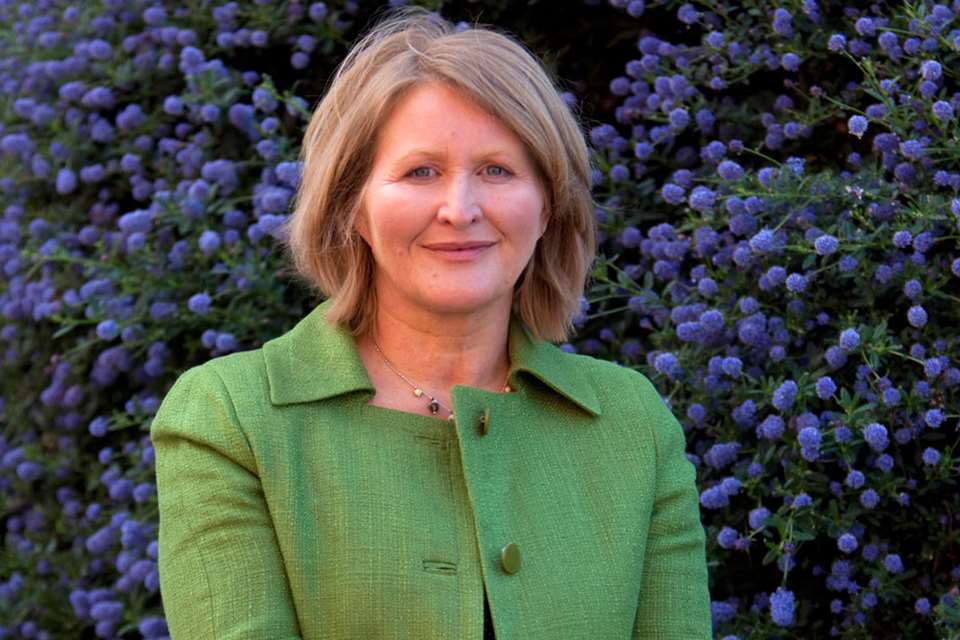Nursery Management: Poverty - Destined for failure?
Hannah Crown
Monday, September 21, 2015
Early years practitioners know that part of their job is reducing the disadvantage gap. But what do they really think of poor children? Dr Donald Simpson, who has led a two-year study into practitioners'perceptions of poverty, reports.

Poverty is not a minority issue. According to Barnardo's, an estimated 3.7 million children are living in poverty - over a quarter. People working in the early years sector are now, globally, seen as key to helping to change this. Yet little is known about how early years practitioners view poverty.
Across developed countries, poverty is, at least theoretically, recognised to be a problem for society. We know it harms every aspect of children's lives: materially, like having enough food to eat; educationally - underachieving at school; socially, in its links to unemployment and crime; psychologically and physically, as poverty and brain development are connected. Thus it isn't just a moral issue; poverty has economic and social consequences for the well-being of everyone.
We know how quality early years education and care improves a range of outcomes for children by the time they reach five, with one estimate suggesting with every £1 invested in quality early care and education, £13 of taxpayers' money is saved later. The Government is acknowledging this by continuing to provide funding for early years initiatives. It is increasing free early education places for working parents, and the Early Years Pupil Premium (EYPP) is being introduced to support disadvantaged threes and fours. The aim is to reduce the attainment gap between children in poverty and their better-off peers. We should not underestimate the scale of the challenge. Although a small number of children experiencing disadvantage do relatively well, this is against the odds, and the attainment gap, which makes the majority of children in poverty less ready for school than their peers, is significant and persistent - even in settings rated as high quality.
We know an awful lot about how poverty impacts on children, but there has been no research on early years practitioners' perspectives on child poverty. Now, Eunice Lumsden (University of Northampton), Rory McDowall Clark (University of Worcester) and myself are completing research aiming to plug this gap.
Our general findings were, to me at least, surprising: a majority of practitioners shared the Government neoliberal construction of poverty as a problem of troubled parenting, with relatively few attributing it to other factors like low pay. From 179 questionnaires and 30 interviews in four countries, respondents held relatively negative views about children in poverty (relative to their better-off peers).
This pessimism went right across the board: cognitive ability, motor skills, emotional development, health, respectfulness and ability to stay on task were all included. Overall, practitioners held negative views of parents in poverty and their attendance at meetings, volunteering in settings, response to communications and engagement in children's learning.
The more strongly practitioners attributed poverty to individual factors (ie, if you are poor, it is your own fault) the more negative were their views of children and parents in poverty. Yet those who adopted a strong disapproving stance were less successful at working with parents in poverty than those who believed situational factors (for example, low pay) played a stronger part. A general belief that poverty is caused by individual-level factors creates a negative bias against the poor. The interview data suggested most practitioners were unaware that they had a negative bias towards children in poverty.

All this comes against a wider, and confused, political context. This dates back to 1999, when Labour introduced the 2010 Child Poverty Act, with targets to reduce child poverty across four measures by 2020. From May 2010, the Conservative-Liberal Democrat coalition reasserted the UK's commitment to these targets. The UK's first national child poverty strategy followed in 2011 and a second was published in 2014, with both positioning the early years sector as an important way to reduce inequality.
Since its election this May, though, the approach of the Conservative Government has left some rather bewildered. On the one hand, it is pursuing austerity cuts via reducing welfare budgets. On the other, it is investing in early years to encourage take-up of 'free' places from parents. The welfare cuts contained in the recent budget will be felt most by the poorest families, according to the Institute for Fiscal Studies, while increasing child poverty levels across the country.
Having a low income is strongly related with how children do at school. There is a significant attainment gap between those on free school meals and those who are not at Key Stage 2 (in 2013 this was 13 percentage points). A study from the London School of Economics found that an increase in household income of parents of children on free school meals an extra £7,000 could reduce this by half. Yet earlier this year, the Government has removed household income as a measure of child poverty. Now there is to be a statutory duty to measure 'educational qualifications' and 'worklessness' - despite the fact that 65 per cent of children currently deemed to be experiencing poverty are living in a working household.
The number of working poor has surged since 2010, and all of the above has led to critics such as the Child Poverty Action Group claiming the new Government is moving to 'bury' what will be the failure of its child poverty approach.
In response, the Government says it is 'absolutely on the side of hard-working families who want to get on in life'. A spokesperson says the number of children growing up in workless families is 'at a record low' and adds that schemes such as Universal Credit, the 30 hours extension and the new 'national living wage' will help achieve its commitment to 'parents moving into work, increasing their earnings, and keeping more of what they earn'. 'We are moving Britain from a low wage, high tax and high welfare economy to a higher wage, lower tax and lower welfare society,' he says.
In terms of where all this leaves early years practice, our study could provide some useful pointers. One striking finding was that while several practitioners identified how children in poverty have additional needs, the majority simultaneously indicated a preference for working with all children in the same way. From interviews, it appears this was done in an attempt to avoid possible stigmatisation of children in poverty. Many also said they were not extra-sensitive or supportive to children in poverty - ie, they did not provide support that moves beyond that dealing with 'normal' development issues. Yet a sizeable minority of children are entering settings with needs related to the disadvantage they and their families experience. This raises a concern that practitioners are missing these needs.
This was compounded by reports of a lack of local-level financial and other support because of council budget cuts. The Pupil Premium's effectiveness at reducing inequality in schools since it was introduced in 2011 is patchy. Research by think tank Demos last year found the attainment gap between children in poverty and others increased in some areas after the Pupil Premium's introduction. The National Audit Office reported last month that the gap has narrowed only slightly and 'remains wide'. Furthermore, Ofsted has recently talked about disadvantaged pupils remaining 'invisible' in schools receiving the Pupil Premium. The poverty 'sensitivity' of practitioners, therefore, cannot be assumed even via the delivery of the targeted EYPP. Indeed, several of our sample members displaying a lack of poverty sensitivity were involved in the trial of the two-year-old free education places for disadvantaged children.
On a more positive note, we believe our research also has implications for creativity. Early Education's scheme to look at how best to use the EYPP 'creatively' has these parameters: 1) 'Quality improvement including continuing professional development' 2) 'Refining partnership with parents', and 3) 'Broadening the wider experience of children'. Our findings suggest the following is needed for a creative approach:
- Improvements in care will help address inequality. Professional development could take the form of anti-bias training.
- Successful partnerships with parents cannot be built on negative views about social status. A reciprocal, rather than hierarchical, approach is needed.
- Broadening the experiences of children ... should be built on sensitivity to disadvantaged children's everyday experiences, sustained shared interaction with them, and the targeting of their immediate needs, which may mean moving beyond the Early Years Foundation Stage.
Dr Donald Simpson is senior lecturer in education at Teesside University
MORE INFORMATION
A UK-US Investigation of Early Education Practitioners' Opinions about Child Poverty and its Prioritising Within their Practice along with a related report on parents in poverty
The EYPP scheme can be found here








